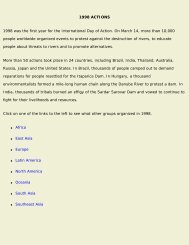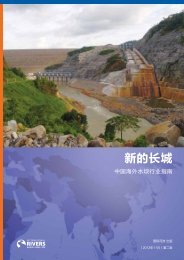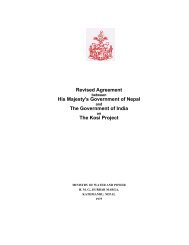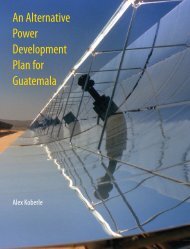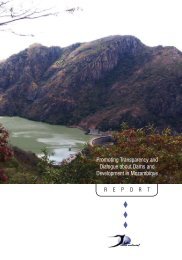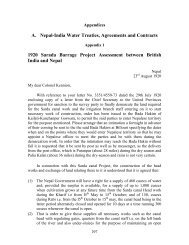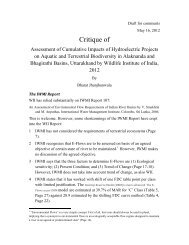Proposed Power Development Plan (PDP) 2012 - Palang Thai
Proposed Power Development Plan (PDP) 2012 - Palang Thai
Proposed Power Development Plan (PDP) 2012 - Palang Thai
- No tags were found...
You also want an ePaper? Increase the reach of your titles
YUMPU automatically turns print PDFs into web optimized ePapers that Google loves.
<strong>Proposed</strong> <strong>Power</strong> <strong>Development</strong> <strong>Plan</strong> (<strong>PDP</strong>) <strong>2012</strong>and a Framework for Improving Accountability and Performance of <strong>Power</strong> Sector <strong>Plan</strong>ningplant, or more for larger plants and less for VSPP-scale plants. Will <strong>Thai</strong>land be caught with power shortagesituation?Because of excessive past investment, <strong>Thai</strong>land’s reserve margin in 2011 is 33.9%, far above the target of 15%.<strong>Thai</strong>land has sufficient surplus capacity and projects in the pipeline 14 to maintain a minimum 15% reserve marginuntil 2017, without additional investments in EE/DSM, without adding more cogeneration capacity, and withoutplant life extension. We thus have at least five years before more capacity is added if the adjusted forecast isaccurate. The focus in the <strong>PDP</strong> <strong>2012</strong> is on smaller, more distributed power plants which have shorter lead times,enabling a shorter, faster response time. This provides an additional, but unquantified, benefit of the <strong>PDP</strong> <strong>2012</strong>.Energy self-reliance: reduced dependency on importsEnergy self-reliance in this context means reliance on energy sources that are locally available. Hence, the moreelectricity production from imported fuel or generation sources, the less energy self-reliant <strong>Thai</strong>land is. <strong>PDP</strong> 2010calls for investments in energy sources that are not locally sourced such as hydroelectric imports from neighboringcountries, imported coal and gas (due to limited domestic resources) and uranium to fuel nuclear reactors. Byinvesting heavily in energy efficiency in the <strong>PDP</strong> <strong>2012</strong>, the need to rely on imported fuel sources is greatly reducedthus reducing the need to depend on energy imports (Table 20).Sources of electricity 2010DomesticLignite-Mae MohHydro - EGATREGas (Gulf of <strong>Thai</strong>land)65.4%10.7%3.9%3.1%47.8%<strong>PDP</strong> 2010 <strong>PDP</strong> <strong>2012</strong>2030 203035.2%2.4%1.5%6.0%25.3%59.0%4.1%2.4%9.9%42.6%ImportsCoalGas (Burma/LNG)Fuel OilDieselHydro imports /MalayNuclear34.6%8.1%20.5%0.6%0.1%5.4%0.0%64.8%25.0%13.6%0.0%0.0%15.3%11.0%41.0%7.3%28.4%0.0%0.0%5.2%0.0%Total 100.0% 100.0% 100.0%Table 20: Reduced dependency on imports: according to <strong>PDP</strong> 2010, about 65% of electricity would be sourcedfrom foreign sources making <strong>Thai</strong>land highly dependent on imports. In contrast,the <strong>PDP</strong> <strong>2012</strong> plans to rely onmostly domestic sources for meeting the electricity demand.Promotion of renewable energyThe government has set a goal to increase the share of renewable energy (RE) in the total energy mix to 25% by2020. Though there is no specific goal for the power sector, what is planned for the power sector will impact theoverall energy mix. Even though the <strong>PDP</strong> <strong>2012</strong> adopts the same renewable energy capacity and energy targets(measured in MW and GWh) as the <strong>PDP</strong> 2010, because fewer conventional power plants are needed, the overallshare of renewable energy in the <strong>PDP</strong> <strong>2012</strong> is much higher (Table 21).14including the planned capacity addition of VSPPs and SPPs, but excluding the plants deemed “unnecessary” in Table 1332




